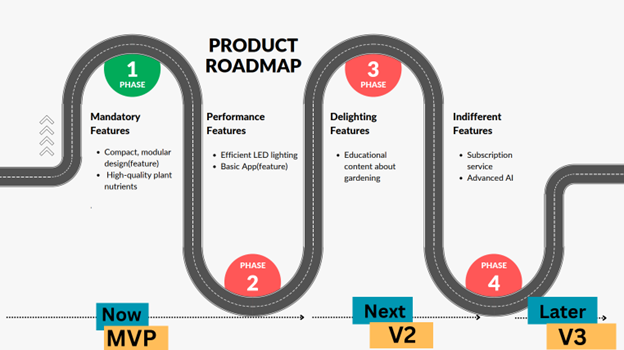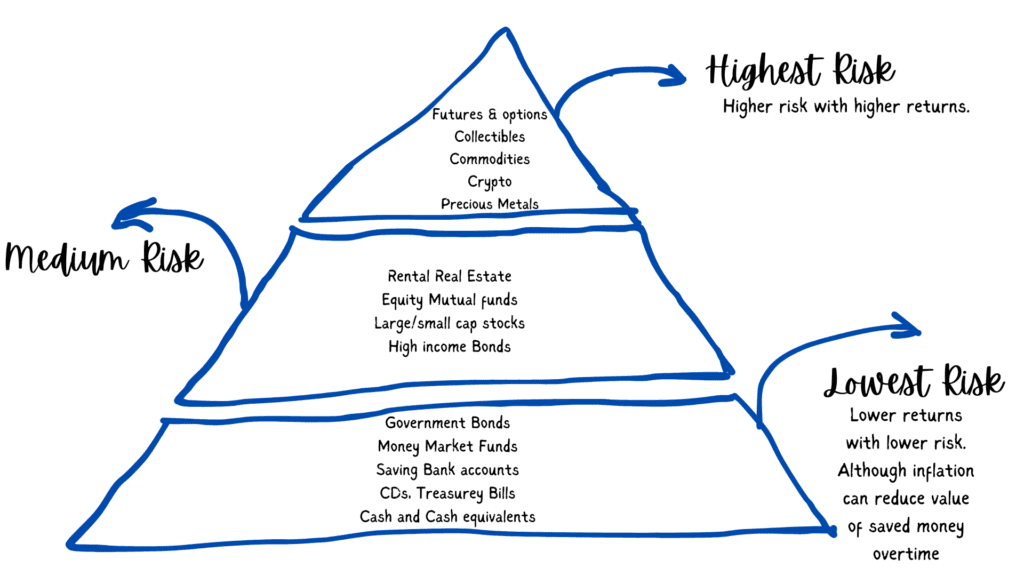
Introduction
Welcome to the vibrant world of Bangalore’s startup ecosystem! Bangalore, often dubbed the Silicon Valley of India, is a bustling hub for startups, especially in the tech and sustainability sectors. With a dynamic mix of innovation, investment, and entrepreneurial spirit, Bangalore continues to attract budding entrepreneurs and seasoned investors alike. This blog delves into the growth of startups in Bangalore, offering insights into market trends, entrepreneurial success stories, and practical advice for those looking to make their mark. Let’s embark on this journey to understand the pulse of Bangalore’s startup growth.
Current Landscape of Startups in Bangalore
Bangalore is buzzing with entrepreneurial activity, making it a leading destination for startups in India. The city’s startup ecosystem is characterized by a diverse range of sectors, with technology and sustainability leading the charge. From innovative tech solutions to green initiatives, Bangalore startups are at the forefront of cutting-edge developments.
The tech sector remains a cornerstone of Bangalore’s startup scene. Companies are leveraging advanced technologies like AI, machine learning, and blockchain to create solutions that address global challenges. Sustainability is another key area, with startups focusing on renewable energy, waste management, and sustainable agriculture.
Investment patterns in Bangalore reflect the city’s dynamic growth. There has been a steady influx of venture capital, with investors keen on backing startups that promise high returns and innovative solutions. In recent years, sectors such as fintech, health tech, and edtech have attracted significant funding, further fueling the growth of startups in these areas.
Market trends indicate a positive outlook for Bangalore’s startup ecosystem. The city’s robust infrastructure, access to talent, and supportive government policies create an environment conducive to entrepreneurial success. Additionally, collaborative spaces and incubators provide startups with the resources and mentorship they need to thrive.
As Bangalore continues to evolve as a startup hub, it remains a fertile ground for new ideas and ventures. The city’s blend of technology, investment, and entrepreneurial spirit ensures that it will remain a pivotal player in India’s startup landscape.
Entrepreneurial Insights
In the bustling startup ecosystem of Bangalore, there are countless stories of success that inspire and guide new entrepreneurs. Let’s dive into some of these insights and lessons from prominent Indian entrepreneurs who have carved their paths to success.
One of the standout figures in Bangalore’s startup scene is Byju Raveendran, the founder of BYJU’S. Starting as a small online tutoring venture, BYJU’S has grown into a global edtech giant. Byju’s journey underscores the importance of understanding market needs and leveraging technology to scale operations. His advice to budding entrepreneurs: “Focus on creating value for your customers, and success will follow.”
Another inspirational story is that of Nandan Nilekani, co-founder of Infosys and architect of India’s Aadhaar project. Nilekani emphasizes the significance of long-term vision and the ability to pivot when necessary. He often highlights the importance of building a strong, adaptable team and staying resilient in the face of challenges.
Practical advice on business planning, funding, and team-building can also be gleaned from Kunal Shah, founder of CRED. Shah’s journey illustrates the power of innovative thinking and the ability to disrupt traditional industries. His key takeaway: “Understand your users deeply and create products that solve real problems for them.”
Team-building is another crucial aspect for startups. Ashish Hemrajani, the founder of BookMyShow, stresses the importance of hiring the right people who share the company’s vision and culture. He believes that a cohesive team can overcome even the most daunting challenges.
Funding is often a significant hurdle for startups. Vani Kola, Managing Director at Kalaari Capital, advises entrepreneurs to be persistent and strategic when seeking investment. She encourages startups to build a solid business model and demonstrate clear growth potential to attract investors.
These insights from successful entrepreneurs highlight the essential elements of starting and growing a business in Bangalore. From focusing on customer value to building strong teams and seeking strategic funding, these lessons provide a roadmap for aspiring entrepreneurs.
Regulatory Environment
Navigating the regulatory landscape is a critical aspect of running a startup in Bangalore. Understanding India’s business laws and staying updated on legal changes can significantly impact a startup’s success.
India’s business laws provide a structured framework for startups, ensuring legal compliance and fostering a conducive environment for growth. Key regulations affecting startups include the Companies Act, 2013, which governs company formation, management, and operations. This act simplifies the process for startups to incorporate, making it easier to set up and scale operations.
Recent legal updates have further streamlined processes for startups. The introduction of the Startup India initiative has been a game-changer, offering tax benefits, easier compliance, and faster exit options for startups. Under this initiative, eligible startups can benefit from a three-year tax holiday, which eases the financial burden during the crucial early stages.
Another significant regulation is the Goods and Services Tax (GST), which has unified various indirect taxes under a single umbrella. For startups, this means a simplified tax structure and reduced compliance costs. However, understanding and implementing GST can be challenging, necessitating the need for professional guidance.
Intellectual property rights (IPR) are crucial for startups, particularly those in tech and innovation-driven sectors. Protecting patents, trademarks, and copyrights ensures that startups retain their competitive edge. The Indian government has introduced several measures to simplify the IPR registration process, including expedited examination for startups.
Labor laws also play a vital role in shaping the startup environment. Compliance with the Shops and Establishments Act, Payment of Wages Act, and other labor regulations is essential to maintain smooth operations and avoid legal pitfalls.
The regulatory environment in Bangalore, supported by India’s progressive legal framework, provides a solid foundation for startups to thrive. Staying informed about legal changes and seeking professional advice can help startups navigate this complex landscape effectively.
Challenges and Opportunities
Bangalore’s startup ecosystem, while vibrant and promising, presents its own set of challenges and opportunities. Understanding these can help entrepreneurs navigate the landscape more effectively and capitalize on the city’s dynamic environment.
Challenges
- Funding Difficulties: Securing initial funding is a common hurdle for many startups. While venture capital is abundant, competition is fierce, and convincing investors requires a strong business model and clear growth potential.
- Regulatory Hurdles: Despite a supportive legal framework, navigating regulatory requirements can be complex and time-consuming. Startups need to stay updated on compliance issues to avoid legal setbacks.
- Talent Acquisition: Attracting and retaining skilled talent is another significant challenge. With numerous startups and established tech companies vying for the same pool of skilled professionals, building a strong team can be difficult.
- Market Penetration: For many startups, breaking into the market and building a customer base is a daunting task. Effective marketing strategies and a deep understanding of customer needs are crucial.
- Operational Scalability: Scaling operations while maintaining quality and efficiency is a critical challenge. Startups need robust processes and infrastructure to manage growth effectively.
Opportunities
- Tech Innovation: Bangalore’s strong tech ecosystem offers immense opportunities for startups focusing on AI, machine learning, blockchain, and other advanced technologies. The city’s tech-savvy environment provides a fertile ground for innovation.
- Sustainability Initiatives: With increasing focus on sustainability, startups in renewable energy, waste management, and sustainable agriculture have significant growth potential. The government’s push for green initiatives further supports this sector.
- Government Support: Initiatives like Startup India and various state-level programs offer financial incentives, mentorship, and networking opportunities. These programs are designed to reduce entry barriers and support startup growth.
- Collaborative Ecosystem: Co-working spaces, incubators, and accelerators provide startups with resources, mentorship, and networking opportunities. This collaborative environment fosters innovation and growth.
- Global Market Access: Bangalore’s reputation as a global tech hub attracts international investors and partners. Startups have the opportunity to expand their reach beyond India and tap into global markets.
Balancing Act
For startups in Bangalore, the key to success lies in balancing these challenges with the available opportunities. By leveraging the city’s strengths, staying adaptable, and focusing on innovation, entrepreneurs can navigate the hurdles and seize the opportunities to achieve growth and success.
Practical Tips for Entrepreneurs
Embarking on a startup journey in Bangalore can be both exciting and challenging. Here are some practical tips to help entrepreneurs navigate the startup ecosystem effectively:
1. Develop a Solid Business Plan
- Outline your business goals, target audience, value proposition, and revenue model.
- Include detailed market research to understand your competition and customer needs.
- Use this plan as a roadmap to guide your startup’s growth and secure funding.
2. Secure Funding Strategically
- Explore various funding options, including angel investors, venture capital, government grants, and crowdfunding.
- Build a compelling pitch deck highlighting your business model, market potential, and unique value proposition.
- Network with investors and attend startup events to find potential backers.
3. Build a Strong Team
- Hire individuals who share your vision and complement your skills.
- Focus on creating a collaborative and inclusive company culture.
- Invest in continuous learning and development to keep your team motivated and skilled.
4. Leverage Technology
- Utilize technology to streamline operations and improve efficiency.
- Invest in scalable solutions that can grow with your business.
- Stay updated on tech trends to keep your startup competitive.
5. Focus on Customer Needs
- Prioritize customer feedback to refine your product or service.
- Offer exceptional customer service to build loyalty and retain clients.
- Use data analytics to gain insights into customer behavior and preferences.
6. Navigate Regulatory Requirements
- Stay informed about the latest regulatory changes affecting your industry.
- Seek professional legal advice to ensure compliance with business laws.
- Use government resources and programs designed to support startups.
7. Network and Collaborate
- Join startup communities, incubators, and accelerators to access resources and mentorship.
- Attend industry events, webinars, and workshops to expand your network.
- Collaborate with other startups and established companies for mutual growth.
8. Embrace Sustainability
- Integrate sustainable practices into your business model.
- Explore opportunities in renewable energy, waste management, and eco-friendly products.
- Communicate your commitment to sustainability to attract environmentally conscious customers and investors.
9. Stay Resilient and Adaptable
- Prepare for setbacks and be ready to pivot when necessary.
- Keep a positive attitude and maintain perseverance in the face of challenges.
- Continuously evaluate and adjust your strategies to stay aligned with market demands.
10. Utilize Government Initiatives
- Take advantage of programs like Startup India for financial incentives and support.
- Register for government schemes that offer tax benefits and reduced compliance costs.
- Stay connected with local startup hubs to access resources and opportunities.
By following these practical tips, entrepreneurs in Bangalore can navigate the complexities of the startup ecosystem and position their ventures for success. Remember, the journey may be challenging, but with the right strategies and a resilient mindset, you can turn your startup dreams into reality.
Conclusion
Bangalore, with its vibrant startup ecosystem, offers a fertile ground for entrepreneurs to innovate, grow, and succeed. The city’s unique blend of technology, investment opportunities, and supportive regulatory environment makes it an ideal place for startups to thrive.
We’ve explored the current landscape of Bangalore’s startups, delved into entrepreneurial insights, examined the regulatory environment, and highlighted the challenges and opportunities. Additionally, we’ve shared practical tips to help entrepreneurs navigate their journey effectively.
As you embark on or continue your startup journey in Bangalore, remember to focus on creating value for your customers, building a strong team, and staying adaptable to changing market dynamics. Leverage the city’s robust tech infrastructure and take advantage of government initiatives designed to support startups.
Empower your startup journey with Rich Storehouse, where we believe in fostering innovation, supporting entrepreneurial growth, and contributing to a sustainable future. The road may be challenging, but with the right strategies and a resilient mindset, you can turn your entrepreneurial dreams into reality.
Thank you for joining us on this exploration of Bangalore’s startup growth. Stay inspired, stay innovative, and keep pushing the boundaries of what’s possible.
Sure! Here are some reference links to support the content and stories shared in the blog post:
References
Bangalore Startup Ecosystem
Entrepreneurial Insights
- Byju Raveendran (BYJU’S)
- Nandan Nilekani (Infosys, Aadhaar)
- Kunal Shah (CRED)
- Ashish Hemrajani (BookMyShow)
- Vani Kola (Kalaari Capital)
Regulatory Environment
- Startup India – Official Website
- India Filings – Overview of Startup India Scheme
- Ministry of Corporate Affairs – Companies Act, 2013
- GST India – Official Website
Challenges and Opportunities
Practical Tips for Entrepreneurs



















